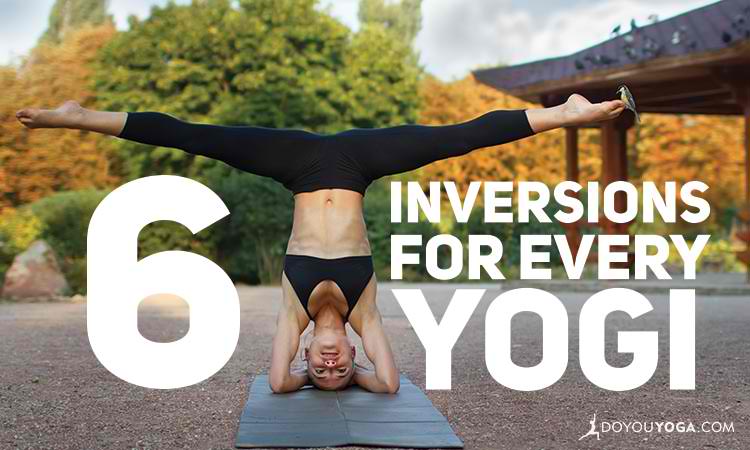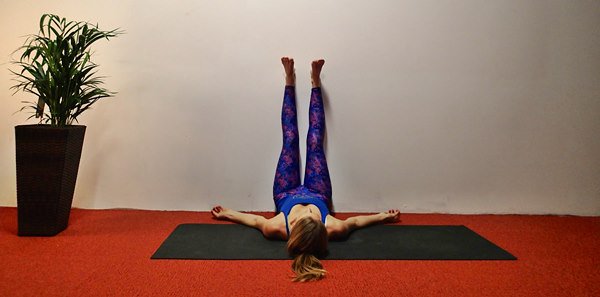Just because we humans are built to stand upright, doesn’t mean we can’t benefit from turning upside down. Making inversions part of your regular yoga practice can boost the benefits of your practice— body and mind.
Benefits of Inversions
Inversions let you see the world in a different way…literally. First and foremost, they help you relax. But in addition, they will challenge you, and as you are able to hold these postures, you can’t help but experience a boost in self-confidence.
Physically, inversions are good for your heart and brain. When you turn yourself on your head, your brain gets flooded with fresh blood and your blood pressure and heart rate get a bit of a break. It also kick starts your lymphatic system, which boosts immunity.
If you’re new to inverting, start with the more simple asanas, even those that keep your hands and feet on the ground, and work your way up to the more challenging ones. As you progress and work on your strength and balance, the wall will be your best friend.
Entry-Level Inversions
Legs Up The Wall (Viparita Karani)
This posture may seem simple, but its benefits are anything but small. The posture can do everything from ease stress to help with digestive problems and even lower blood pressure. The key is not to be completely passive but to think about your breathing, focus on the sensations you experience, make sure your legs are straight with ankles together, and allow your body to melt into the earth as you breathe.
Tip: It may help to use a support under your hips. Whether it’s a bolster or a blanket, it should be about six inches from the wall. If your hamstrings are too tight and you’re unable to straighten your legs with your thighs against the wall, it can help to move the support a few inches away.
Downward Facing Dog (Adho Mukha Svanasana)
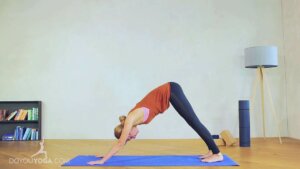
Tip: If you’re new to yoga and struggle to straighten your legs, it’s ok to bend your knees slightly. Just work towards straightening your legs and pressing your heels toward the floor. You can also place your hands on blocks or move your hands further forward.
Intermediate Level Inversions
Dolphin Pose
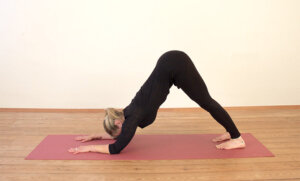
Can’t reach your heels to the floor, or have to keep your feet further away from your shoulders? That’s okay. Do whatever your body will allow.If you’re able to get into the full pose, you’ll see it’s a great way to strengthen your arms, shoulders, core and legs while also opening the shoulders and back of the body.
Headstand
Sound hard? Don’t worry. With a little practice and a lot of confidence – and the wall to help – I’m here to tell you, you can do a headstand. And the more you do it, the more you’ll feel your core get stronger and, even better, the more you’ll feel yourself being better prepared to take on life’s challenges.
A few things to think about: your upper arms should be forearm width apart, allow the top of your head to support some of the weight, and keep your chin tucked slightly so the top of your head is connecting to the earth.
Advanced Inversions
Handstand
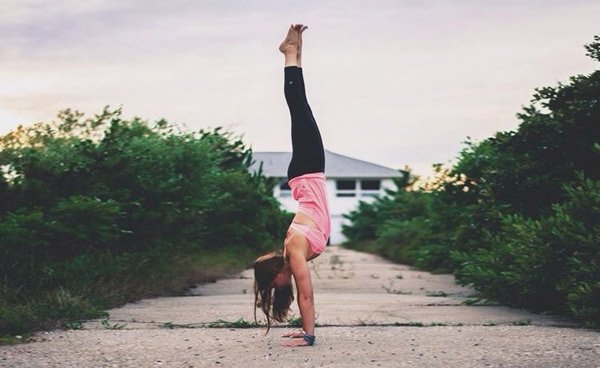
Watching some of the great yogis kick their feet up and balance on their hands in the middle of the room makes it seem so easy, but mastering the handstand is a feat many yogis struggle for years to accomplish. The key is core strength, keeping your body in a straight line, creating a solid base with your hands – and, most of all, confidence.
Once again, the wall will be your best friend until you feel steady enough to move away and trust that you have the ability to do a handstand with no assistance.
Feathered Peacock (Pincha Mayurasana)
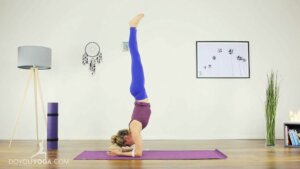
Inversions are fun! Be careful, though…if you’re relatively new to the practice, please use props(i.e. the wall) until you’re confident enough to try the advanced poses on your own. And remember, falling is all part of learning and that day that you are able to balance on your hands, you’ll feel like you can take on the world.
Image credit/Yogi: Anna Coventry